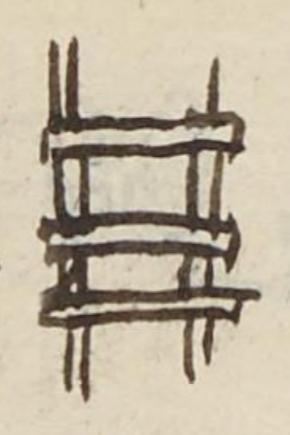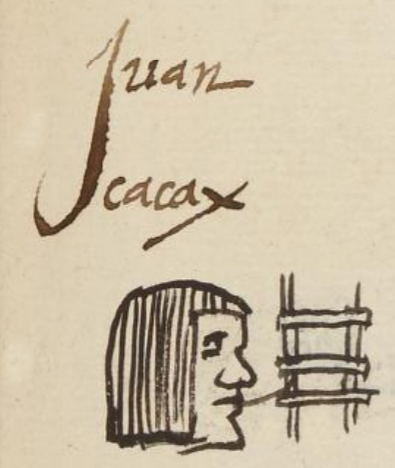Cacax (MH501r)
This black-line drawing of the simplex glyph for the personal name Cacax (here, attested as a man’s name) shows a carrying frame (cacaxtli). It has the look of a ladder with two parallel posts about a body's width apart and three rungs. Nahuas put this on their backs when they needed to attach a heavy load to it. It would have been made of wood. Such a frame can still be seen occasionally in rural areas.
Stephanie Wood
Mexicolore publishes a sixteenth-century image of the tribute item that was 200 "cacaxtles," according to the gloss. The one pictured has six rungs plus a tump line (mecapalli) for putting onto one's forehead, which distributes some of the weight. This image from the Codex Mendoza also appears in this collection (see below).
Stephanie Wood
Juan
cacax
Juan Cacax
Stephanie Wood
1560
Jeff Haskett-Wood
marcos, sogas, cargas, transporte, tamemes, madera, transporte, transportador, estructura para llevar cosas en la espalda acuestas

cacax(tli), a frame for carrying things on the back, https://nahuatl.wired-humanities.org/content/cacaxtli
el cacaxtle, o el cargadero
Stephanie Wood
Matrícula de Huexotzinco, folio 501r, World Digital Library, https://www.loc.gov/resource/gdcwdl.wdl_15282/?sp=81&st=image
This manuscript is hosted by the Library of Congress and the World Digital Library; used here with the Creative Commons, “Attribution-NonCommercial-ShareAlike 3.0 License” (CC-BY-NC-SAq 3.0).



